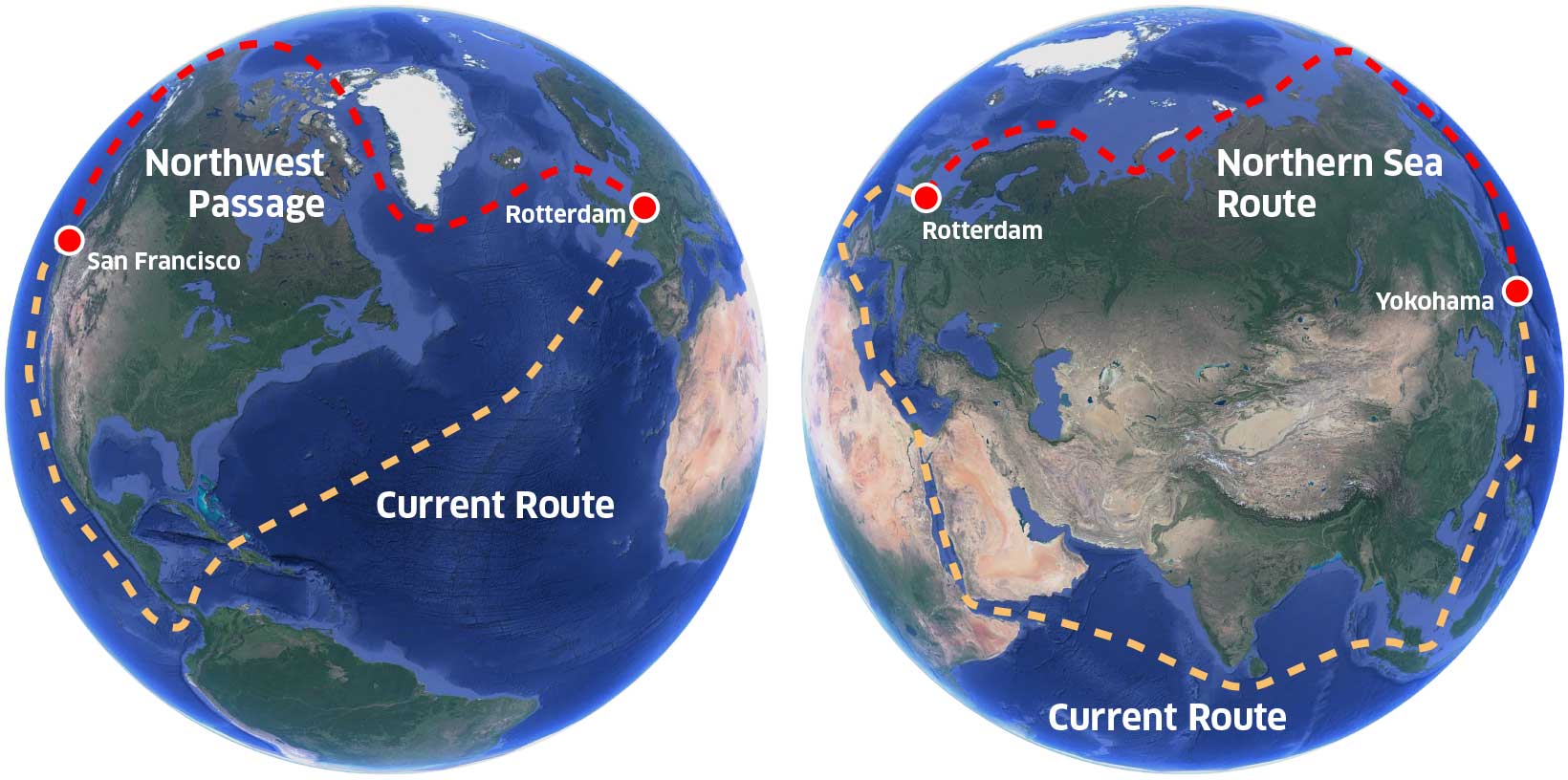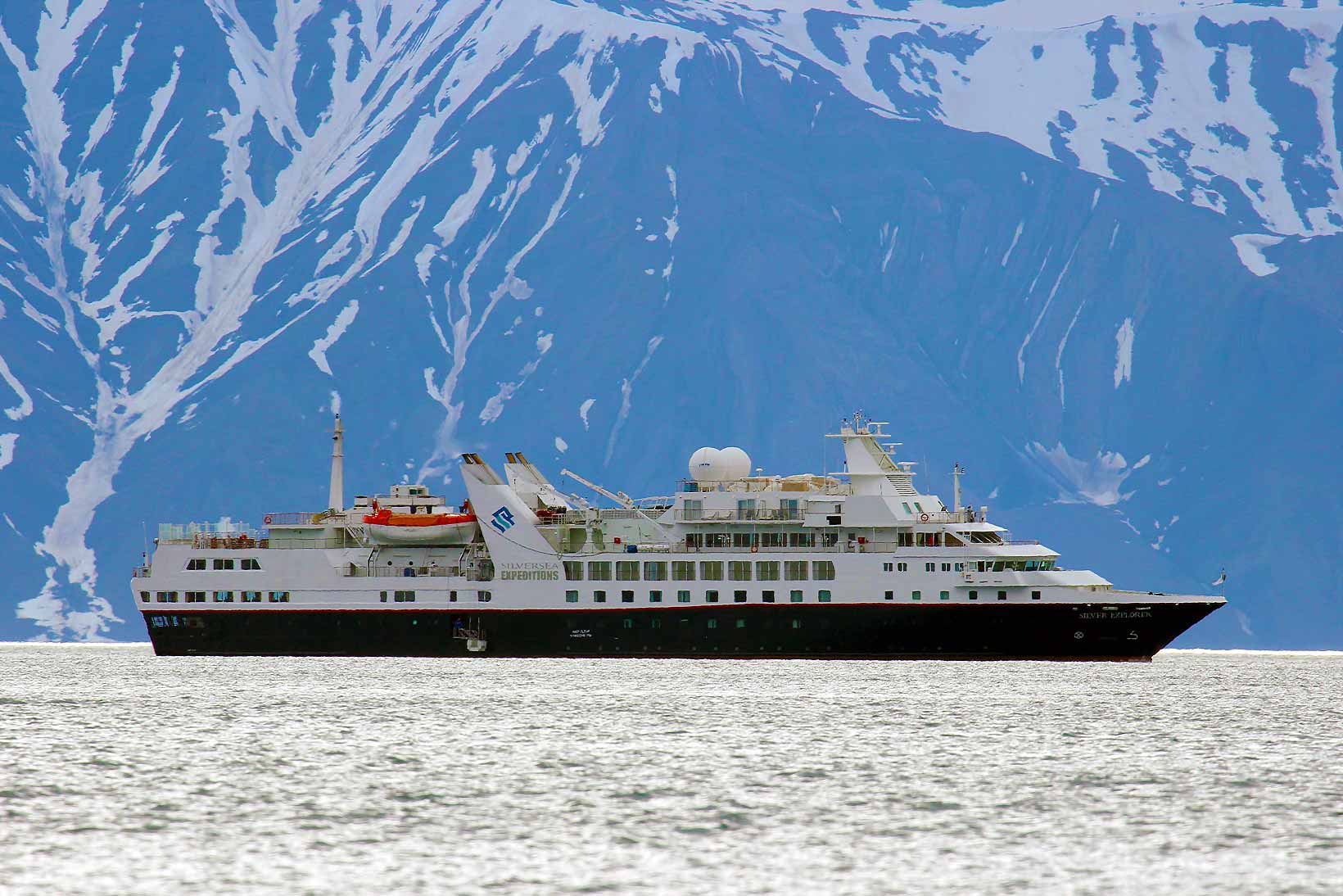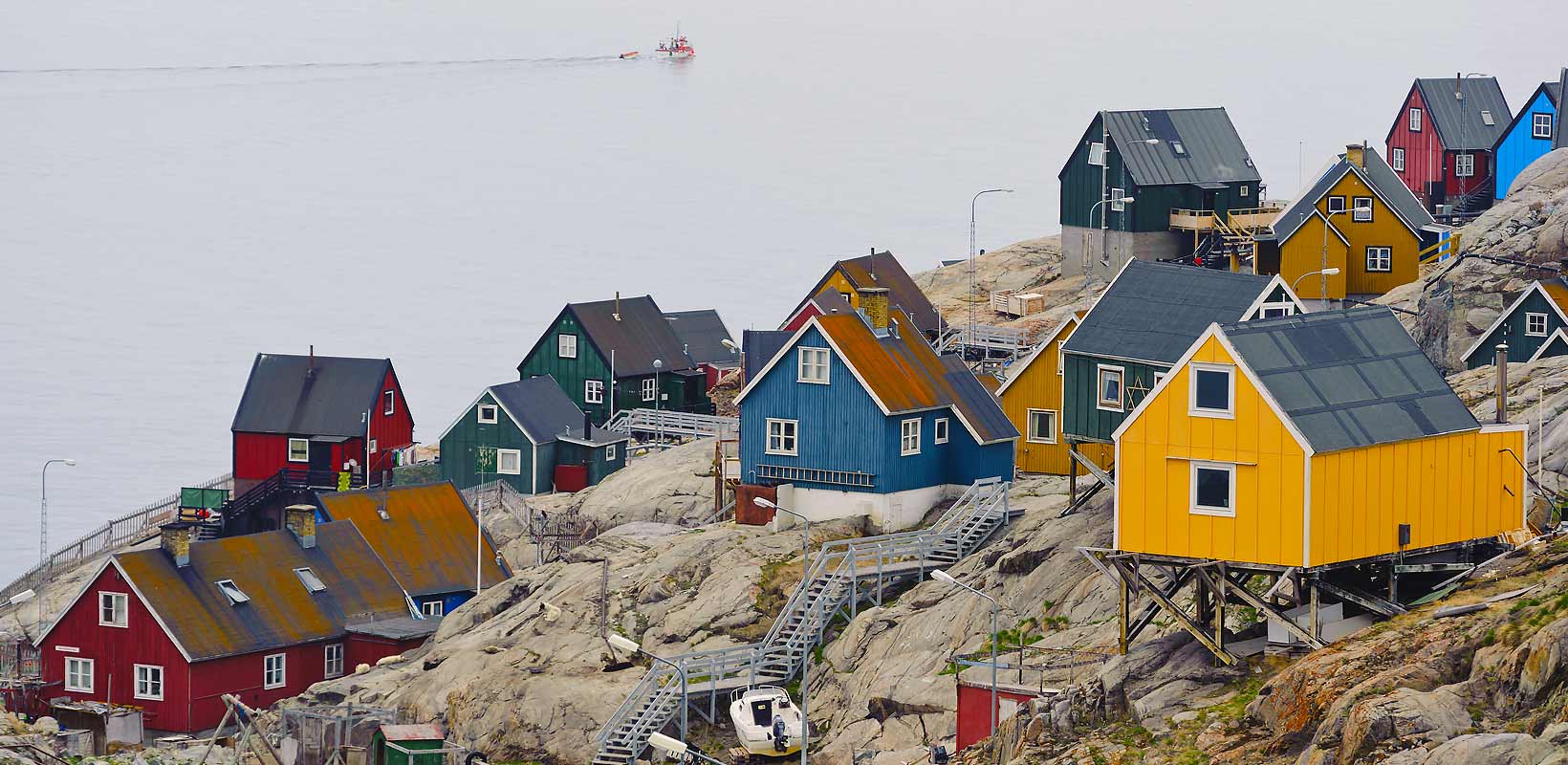Find out about the Northwest and Northeast shipping routes. What are they and how will changes in the climate affect shipping routes around the world.
The Northwest Passage is a series of possible shipping routes connecting the Atlantic and Pacific Oceans through the Canadian Arctic.
The Northeast Passage (also known as the Northern Sea Route) is any shipping route between Europe and Asia along the northern shores of Russia.
The maps below show the routes of the two passages, in comparison with more commonly used shipping routes between Europe and North America or Asia.

Who owns the Northwest and Northeast Passages?
International law states that no one owns the North Pole, or the oceans immediately surrounding it. The five ‘Arctic nations’ (US, Russia, Canada, Norway and Greenland) adjacent to the Arctic Ocean can each claim as an exclusive economic zone (EEZ) the 200 nautical miles of ocean off their coastline. However, there is much dispute over whether other parts of the seas in this region form a country’s national waters or internal waters.
In 1985, Canada designated the whole area through which the Northwest Passage passes as a Canadian archipelago (group of islands), claiming the route as part of their internal waters. If this was deemed to be the case, Canada would be able to regulate fishing and set laws on smuggling, shipping and the environment, however it would not be able to close the route to navigation by foreign vessels. Canada has until 2013 to submit its case officially to the UN. Until then, the uncertainty over sovereignty of the Northwest Passage continues. For example, the US disputes the Canadian’s claim and considers that the Passage is an international strait.


The Northeast Passage runs along the Arctic coast of Russia between the Atlantic and Pacific Oceans, and is considered to be under Russian ownership. The Russians have been using the route for decades, with the help of icebreaker ships. It has until recently been closed to foreign ships, but now the Russians want to open it up and are hoping that it will eventually compete with the Suez Canal as one of the most popular shipping routes. This is mainly for economic reasons; they can charge companies to use the route and for the Russian icebreakers that are required to navigate it. Russia is also keen to exploit the natural resources which are present in the Arctic.
Why are they so important?
The main reason that the Northwest and Northeast Passages are so important is for shipping. The Northwest Passage route is 7,000 km shorter than the current route through the Panama Canal, and the Northeast Passage route is one-third of the distance of the traditional route through the Suez Canal. Shorter distances mean less travel time, lower fuel consumption and costs.
The Managing Director of one shipping company, Nordic Bulk Carriers, has estimated that using the Northeast Passage instead of the Suez Canal would save up to $180,000 in fuel costs. There are also much reduced level of of piracy through these northen routes, compared to the risk of piracy for for ships in the Indian Ocean that are using the Suez Canal.
Why aren’t they used all the time, then?
The Arctic shipping routes aren’t used all the time because this region is frozen over for most of the year. However, although in the far north the sea ice is permanent; at lower latitudes it is seasonal. Climate change is gradually increasing the area that is ice-free during the summer, and lengthening the period that it remains so. A representative of the organization Environment Canada notes that the temperature in the Canadian Arctic has risen by 1.2°C in the last century, which is twice the global average. Ice cover in this region has been reduced by 32% since the 1960s. As a result of global warming, the Northwest and Northeast Passages are becoming increasingly viable as shipping routes.
Are there any other implications?
In 2009, the US Geological Survey carried out a scientific study which found that 25% of the world’s untapped oil and gas reserves are located in the Arctic region. The area is also rich in other natural resources, including nickel, iron ore, phosphate, copper, cobalt, uranium and gold. In the past it has been difficult to explore the natural resources of the region, and impossible to exploit them, due to the ice cover. However, climate change may be making this more possible.
One of the main global markets for energy and natural resources is China. The extension of the ice-free period in the Arctic has two benefits: the exploitation of natural resources, and the opportunity for companies to transport them to China via the Northwest and Northeast Passages. It is for this reason that ownership of the shipping routes has become such a contentious issue in recent years.
Another industry to benefit from ice-free summers in the Arctic is tourism. More and more Arctic cruises are being offered with the chance to see wildlife, watch the Aurora Borealis (northern lights) and sail through icy seas. Tourism is having a positive economic effect on countries such as Greenland, bringing income and jobs.

What is the impact of all this on the environment of the Arctic?
Many environmental groups oppose any future exploitation of the Arctic region. In addition, an increase in the numbers of cargo ships cargo ships using the Arctic sea routes may have a very specific impact on climate change. These ships use advanced diesel engines which emit black carbon (soot) into the atmosphere. Black carbon acts as a greenhouse gas in a similar way to carbon dioxide, and in addition, when it is deposited on snow and ice it alters the albedo (the reflective quality) of these surfaces. White surfaces such as snow and ice reflect sunlight, keeping the ground relatively cool. In contrast, black surfaces (such as when the snow is covered by soot) can absorb more energy from the sunlight leading to relatively higher ground temperatures and the potential for the snow and ice to melt.
Increased number of ships travelling through the Arctic may also bring new species into this distinct ecosystem. For example, species ‘alien’ to the Arctic may be carried in water used by ships for ballast or on their hulls.
These ships may also threaten the biodiversity of the Arctic’s ballast. Introducing aggressive new species to the region in this way could have a serious impact on Arctic ecosystems.
Opening up the Arctic Ocean would also create the potential for more fishing, which may need international action to establish quotas on the levels and species of fish caught.

Are there any other problems linked to the use of the routes?
The Northwest and Northeast Passages have up until now been used relatively infrequently, and as a result, not all of the potential routes have been fully mapped or surveyed. Given the potential for sea ice, thick fog region. Marine creatures can attach to the bottom of ships and be transported across the globe, or they may be carried in water used and extreme cold this area still presents a significant challenge for shipping. And if a ship were to get into trouble there are few search and rescue services available.


The melting of ice in the Arctic region, as a result of climate change, may also affect the livelihoods of indigenous peoples and their ability to hunt for food such as seals and walruses. However, the increased presence of oil companies provides jobs, infrastructure and services for members of these communities. In addition, these companies also often provide wider support for the local communities, such as investment in schools, leisure and other community facilities.
